Despite the fact that only a small number of physicists were prepared to take Einstein’s theories seriously when they were first published, as opposed to the majority who drew attention to conspicuous errors and inconsistencies, nowadays, many theoretical physicists actively encourage members of the public to believe that both the special and general theory of relativity have been elevated to the level of proven scientific facts. Therefore, it’s hardly surprising that some of the quirkier elements of Einstein’s theories about physical effects that allegedly result from relative motion have been co-opted as fundamental principles that now underpin a kind of religion that is cloaked in a pseudoscientific coat of mathematical respectability. Moreover, as a consequence of their widespread acceptance within the higher echelons of theoretical physics, intelligent criticism of Einstein’s The main point of contention that separates experimental physicists from their loftier peers, the self-assured coterie of mathematical theorists who would have one believe that a hierarchy in science has long been established, centres on Einstein’s assertion that the speed of light remains forever constant throughout the universe due to the unproven fact that the rate at which tim “There was a young lady named Bright, The reason why time travel, which permits an effect to precede its cause, is an illogical paradox is because Einstein always maintained that the consequences of relative motion are perfectly symmetrical. In other words, Einstein insisted that whenever two observers are moving relative to each other at constant speed, each observer is entitled to claim that he is stationary and it is the other observer that is moving with respect to him. Essentially, special relativity is a very simple mathematical theory that states that the speed of all relative motion can be calculated from the viewpoint of the observer who is observing the ongoing motion because each observer is legitimately entitled to argue that he is stationary in relation to the moving object that he is observing. For instance, Buller’s Miss Bright is being observed by an observer on planet Earth; hence, the faster she moves relative to him, the slower her clock is supposed to tick in order to ensure that the speed of the light that they are both observing remains the same with respect to her when she uses her clock to m Although Professor Dingle was a highly respected physicist who had served as president of the Royal Astronomical Society, his valid criticism of Einstein’s theory was totally ignored when he cited two identical clocks, A and B, that are moving rectilinearly at uniform velocity with respect to each other and queried: “How does one determine, consistently with the theory, which clock works more slowly? Unless this question is answerable, the theory unavoidably requires that A works more slowly than B and B more slowly than A, which requires no super-intelligence to see is impossible. Now, clearly, a theory that requires an impossibility cannot be true, and scientific integrity requires, therefore, either that the question just posed shall be answered, or else the theory shall be acknowledged to be false.” The abysmal response to his simple question provoked him to comment: “Instead of bringing myself a flood of discordant refutations, I was met by complete silence.” Of the few physicists who did take the trouble to respond to his queries, most deliberately side-stepped the issue by disingenuously alleging that Dingle's precisely worded questions were ambiguous. Understandably, Dingle was dismayed by the dismissive attitude of his peers and stated: “Being a poor psychologist, I did not realise that scientists, like other people, are far more ready to search for flaws in other people’s reasoning than to eliminate prejudices from their own.” Instead of objectively examining the obvious contradictions that Dingle had identified in Einstein’s theory, theoretical physicists have chosen to bury their heads in the sand of irrational dogma, which makes a mockery of the frequently uttered claim that science is the noble search for truth. Likening the defence of relativity theory to the reaction of some New Age religious cult, Dingle pessimistically concluded: “It is ironical that, in the very field in which science has claimed superiority to theology, for example, in abandoning dogma and granting of absolute freedom to criticism, the positions are now reversed. Science will not tolerate criticism of special relativity, while theology talks freely about the death of God, religionless Christianity, and so on (on which I make no comment whatever). Unless scientists can be awakened to the situation into which they have lapsed, the future of science and civilisation is bleak indeed.” Time travel is certainly a fascinating subject to ponder, but from a practical scientific viewpoint it is easy to appreciate why most experimental physicists are inclined to dismiss the idea as theoretical nonsense. They frequently draw attention to the fact that Einstein never performed an important experiment in his life, but merely shuffled complex mathematical equations around on paper in order to obtain his so-called profound insight into a notional version of physical reality in which the rate at which time elapses is dependent on the observer’s speed of motion. Justifiably, his critics highlight the fact that only by deliberately ignoring his own symmetrical principles was Einstein able to elevate what is now termed the ‘clock’, or the ‘twin’ paradox to an intriguing scientific anomaly that, allegedly, is a legitimate asymmetrical consequence of relative motion. Theorists express the paradox in terms of identical twin brothers, one of whom undertakes a long, high-speed journey through space and upon returning to the stationary terrestrial frame of reference finds himself significantly younger than his Earthbound brother. Accordingly, high-speed relative motion is supposed to prevent an adventurous traveller from growing old. Despite the inconsistent assumptions that underpin such bold theorising, relativity, in the contradictory Einsteinian sense, does not exist in nature; it only exists in the form of equations that are scribbled on pieces of paper and the subjective paradoxical interpretations that theorists attribute to them. Therefore, it’s little wonder that when the accomplished British electrical engineer, physicist, mathematician and Fellow of the Royal Society, Oliver Heav 
Similarly, the renowned British experimental physicist Doctor Louis Essen OBE, FRS (1908-1997), who is often referred to as “Old Father Time” due to the fact that while based at the National Physics Laboratory he invented and then built the first caesium atomic clock in 1955, which is accurate to within +/-1 second in 300 years, and who in 1967 succeeded in redefining the international unit of time, the second, by transforming it from a unit of duration that is based on astronomical observation to one that relates to the spectrum of the caesium atom, was a vehement opponent of Einstein’s theory about the relativity of time. In 1971, in an attempt to initiate a rational debate about the questionable logic that underpins relativity theory, Essen published a scientific paper entitled ‘The Special Theory of Relativity: A Critical Analysis’. Despite the fact that he had been awarded numerous honours for his invaluable contribution to physical science, he was censured by the majority of his peers for daring to publish his critique. Like Dingle, Essen was troubled by their truculent stance as he later wrote: “I was beginning to realise that scientists could be just as irrational as anyone else and having accepted the theory as a faith without understanding it they closed their minds to argument. They also tried to suppress opposition and two of my papers after being accepted by the referees were mysteriously never published.” His detailed criticism even provoked an angry response from several prominent members of the Royal Society and a few influential members of the British government. Essen revealed the extent of the overt animosity that had countered his criticism when, in 1978, he stated: “No one has attempted to refute my arguments, but I was warned that if I persisted I was likely to spoil my career prospects.” Stubbornly refusing to be silenced, Doctor Essen restated his argument in a critical article that he subsequently published in Electronic & Wireless World under the emotive title ‘Relativity – Joke or Swindle?’ Explaining that he was not the only physicist to have realised that Einstein's theory of relativity contains basic and fatal flaws, Essen wrote: “But there have always been its critics: Rutherford treated it as a joke; Soddy called it a swindle; Bertrand Russell suggested that it was all contained in the Lorentz transformation equations; and many scientists commented on its contradictions. These adverse opinions, together with the fact that the small effects predicted by the theory were becoming of significance to the definition of the unit of atomic time, prompted me to study Einstein's paper. I found that it was written in imprecise language, that one assumption was in two contradictory forms and that it contained two serious errors.” Essen was, of course, referring to the errors that contradict Einstein’s assertion that the consequences of relative motion are perfectly symmetrical, because as he pedantically explained: “One of the predictions of the theory was that a moving clock goes more slowly than an identical stationary clock. Taking into account the basic assumption of the theory that uniform velocity is purely relative, it follows that each clock goes more slowly than the other when viewed from the position of the other.” Nonetheless, as Essen pointed out: “He [Einstein] concluded that, at the end of the journey, the time recorded by the moving clock was less than that recorded by the stationary clock. The result did not follow from the experiment, but was simply an assumption slipped in implicitly during the complicated procedure.” Essen then added: “Einstein then made his second mistake in the course of a thought experiment. He imagined that two clocks were initially together and that one of them moved away in a number of straight line paths, at a uniform velocity, finally returning to the starting point. He concluded that on its return the moving clock was slower than the stationary clock. Essen then applied similar criticism to the dubious results that had been obtained from an experiment that had been performed at considerable expense in 1972, by Joe C. Hafele of the Physics Department, Washington University, St. Louis and Richard E. Keating who was based at the US Naval Observatory, Washington, D.C., in which his caesium atomic clocks had been flown westward and in the opposite direction, west to east, around the Earth aboard jet planes over a period of several weeks in an attempt to validate the notional concept of time dilation. Having blatantly ignored the symmetrical principles upon which Einstein had based his relativity theory, the experimenters allegedly discovered that the motion of a clock relative to an observer either slows down or speeds up the rate at which time elapses in the clock’s inertial frame of reference depending on the direction in which the clock is caused to move. The reason that is frequently given for the weird behaviour of the clocks is that the additional unobservable motion due to the Earth spinning on its axis caused them to move at different speeds in relation to each other and with respect to stationary control clocks, despite the fact that the aeroplanes had all moved at the same speed relative to the Earth’s surface, and the motion of the planet and its atmosphere with respect to other celestial bodies due to the Earth's spin had been a common factor that had remained constant in the three inertial systems that had moved with reference to each other. Although the convoluted Earth- The results of the flawed experiment, which were widely published in leading scientific journals, are frequently cited by theoreticians as evidence that is supportive of the clock paradox and to date the exploits of Hafele and Keating have accumulated over 1,000 references in the Science Citation Index. Nonetheless, they failed to convince the incredulous Essen, who, unlike Kelly, had not been privy to the raw test data, because he scornfully stated: “Four atomic clocks were flown round the world and the times recorded by them were compared with the times recorded by similar clocks in Washington. The results obtained from the individual clocks differed by as much as 300 nanoseconds. This absurdly optimistic conclusion was accepted and given wide publicity in the scientific literature and by the media as a confirmation of the clock paradox. All the experiment showed was that the clocks were not sufficiently accurate to detect the small effect predicted.” Essen had known full well that although the atomic clocks had been accurate to within +/-10 nanoseconds per day, the experimenters had claimed to have detected discrepancies within the permissible margin of error; hence, ardent relativists should respect his opinion and acknowledge the validity of his straightforward question: “Why have scientists accepted a theory which contains obvious errors and lacks any genuine experimental support?” The trouble with the attitude of many present day theorists towards Einstein’ Similar dismissive sentiments were voiced by the Swedish Nobel Laureate Hannes Alfvén (1908-1995), who made many disco Having deliberately chosen not to pursue the conventional experimental route, Einstein asserted that imaginary conjecture is a manifestation of intelligence when he assuredly stated: “The true sign of intelligence is not knowledge but imagination.” He had convinced himself that a cursory examination of results obtained from his famous 'gedankenversuch', the ad hoc thought experiments that he had conducted in his imagination in order to test his theories, was equivalent to performing a rational statistical analysis of data assiduously gleaned from real experimental results, and in an attempt to dignify the questionable a priori process of deduction he proudly quipped: “I never came upon any of my discoveries through the process of rational thinking.” However, had Einstein taken Alfvén’s advice and grounded his mathematical theories in the realities of physical science instead of manipulating abstract equations to shore them up, the intriguing contradictions and paradoxical anomalies that are associated with time travel would never have arisen. In addition, he would not have fooled himself into believing that the elegant equations he had derived while constructing his theories were incontrovertible proof that the theories are correct, nor would he have mistakenly equated mathematics to a higher branch of physics and then authoritatively stated: “One reason why mathematics enjoys special esteem, above all other sciences, is that its laws are absolutely certain and indisputable, while those of other sciences are to some extent debatable and in constant danger of being overthrown by newly discovered facts.” The laws of mathematics are, indeed, absolutely certain and indisputable, but laws can be broken and applied indiscriminately in order to justify any unproven assumption, which is what Einstein would frequently do. For instance, as  Inexplicably, when Einstein ‘borrowed’ Lorentz’s principal equation, which is what Russell had been referring to, and incorporated it in his symmetrical version of relativity theory, he retained the Lorentz contraction and the slowing of clocks, despite the fact that the moving bodies were no longer presumed to be in motion with respect to an invisible omnipresent ether. The ingenious equation is derived, applied and discussed at great length in ‘What Einstein Didn’t Know About Time’ and it involves calculating the square root of the speed of the body that is assumed to be moving relative to an ether that conducts and maintains the unvarying speed of light, which Lorentz equated to a universal constant. Crucially, when Lorentz justified his contraction, he stated that it had resulted from a physical action having caused a quantifiable reaction; whereas, Einstein merely stated that the contraction results naturally from the equations of the Lorentz transformation. Every competent mathematician knows that there are two equal and opposite solutions to sums that require the derivation of a square root. For example, the square root of 4 is either +2 or -2 and both solutions are perfectly valid. Lorentz legitimately ignored the negative solution because his moving body was presumed to be continuously encountering the physical resistance of the ether, thus as far as he was concerned it could only contract. Einstein arbitrarily chose to ignore the alternative negative solution, which would obviously produce a linear expansion and caus
|
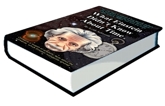
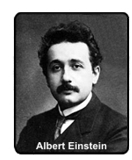 mathematical depiction of relativity theory is neither welcomed, nor is it respected, even though it doesn’t require the services of a genius to prove that there are numerous profound flaws in his inventive train of thought. Consequently, many academically qualified experimental physicists who have serious doubts about the theory are deterred from casting aspersions on the reputed intellectual prowess of Albert Einstein (1879-1955) for fear of ridicule or loss of position. By implication, those who do criticise relativity theory by drawing attention to intrinsic flaws that result in obvious contradictions, which have been disguised as intriguing paradoxes, should be dismissed as foolish incompetents. Furthermore, as like-minded mathematical theorists who have infiltrated the physics establishment are able to ruthlessly exploit the incestuous peer review procedure in order to maintain an unofficial system of thought control, reasoned criticism of Einstein's theories is consistently ignored. Consequentially, leading scientific journals that defer to the establishment automatically refuse to publish papers that are critical of relativity and invariably refuse to give reasons as to why legitimate points of contention cannot be debated in a dignified manner.
mathematical depiction of relativity theory is neither welcomed, nor is it respected, even though it doesn’t require the services of a genius to prove that there are numerous profound flaws in his inventive train of thought. Consequently, many academically qualified experimental physicists who have serious doubts about the theory are deterred from casting aspersions on the reputed intellectual prowess of Albert Einstein (1879-1955) for fear of ridicule or loss of position. By implication, those who do criticise relativity theory by drawing attention to intrinsic flaws that result in obvious contradictions, which have been disguised as intriguing paradoxes, should be dismissed as foolish incompetents. Furthermore, as like-minded mathematical theorists who have infiltrated the physics establishment are able to ruthlessly exploit the incestuous peer review procedure in order to maintain an unofficial system of thought control, reasoned criticism of Einstein's theories is consistently ignored. Consequentially, leading scientific journals that defer to the establishment automatically refuse to publish papers that are critical of relativity and invariably refuse to give reasons as to why legitimate points of contention cannot be debated in a dignified manner. e elapses relative to each observer varies in accordance with his speed of motion. Allegedly, the faster one moves, the slower time passes in one’s immediate frame of reference. Therefore, time travel becomes a physical phenomenon that is entirely dependent on the speed at which the observer moves through three-dimensional space. If one manages to travel faster than the speed of light, then one is theoretically able to travel backwards through time. This is the strange logic that, in 1923, inspired Professor Reginald Buller (1874-1944), the eminent British/Canadian mycologist, to compose his famous limerick in which he describes in graphic detail the paradoxical notional consequences of motion. After having accepted an invitation to attend a meeting at which he had learned about Einstein’s relativity theory, Buller wrote:
e elapses relative to each observer varies in accordance with his speed of motion. Allegedly, the faster one moves, the slower time passes in one’s immediate frame of reference. Therefore, time travel becomes a physical phenomenon that is entirely dependent on the speed at which the observer moves through three-dimensional space. If one manages to travel faster than the speed of light, then one is theoretically able to travel backwards through time. This is the strange logic that, in 1923, inspired Professor Reginald Buller (1874-1944), the eminent British/Canadian mycologist, to compose his famous limerick in which he describes in graphic detail the paradoxical notional consequences of motion. After having accepted an invitation to attend a meeting at which he had learned about Einstein’s relativity theory, Buller wrote: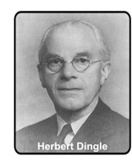 easure it. However, as the distinguished British astrophysicist Herbert Dingle (1890-1978) persistently pointed out, according to Einstein’s theory, Miss Bright is legitimately entitled to claim that she is stationary and it is the Earth that is moving with reference to her symmetrically equivalent inertial frame of reference. Therefore, why, asked Dingle, is one of the observers suddenly able to claim that he is literally stationary in relation to some unspecified position in the universe and that it is the other observer’s motion that is real; or, more precisely, why is a mathematician permitted to arbitrarily allocate one of the observers a privileged static frame of reference and deem the other to be in motion relative to the invariant speed of light? Clearly, the paradox contradicts the symmetrical principles upon which Einstein based his entire relativity theory.
easure it. However, as the distinguished British astrophysicist Herbert Dingle (1890-1978) persistently pointed out, according to Einstein’s theory, Miss Bright is legitimately entitled to claim that she is stationary and it is the Earth that is moving with reference to her symmetrically equivalent inertial frame of reference. Therefore, why, asked Dingle, is one of the observers suddenly able to claim that he is literally stationary in relation to some unspecified position in the universe and that it is the other observer’s motion that is real; or, more precisely, why is a mathematician permitted to arbitrarily allocate one of the observers a privileged static frame of reference and deem the other to be in motion relative to the invariant speed of light? Clearly, the paradox contradicts the symmetrical principles upon which Einstein based his entire relativity theory. iside (1850-1925), who discovered the Earth's ionosphere, numerous laws that pertain to electromagnetic effects, and who simplified the original set of twenty field equations that had been derived by James Clerk Maxwell by reformulating them as the four differential equations that are now referred to as “Maxwell’s equations”, was asked to evaluate Einstein’s special theory of relativity, he stated that he did not regard it to be of any practical value. Heaviside was well aware that the consequences of relative motion are invariably asymmetrical, because, in 1889, he had calculated the deformations in the electromagnetic field that surrounds a moving electric charge, an electron moving with constant velocity, and had discovered that it is flattened in the direction of its motion. Thus, the equipotential surfaces of the two fields (points of equal electric and magnetic flux density that surround a moving electron) are not spherical but form ellipsoids. Conversely, no magnetic effect is associated with the electrostatic field that surrounds a stationary electron and the equipotential surface is spherical. Likewise, he knew that if two electrons are moving together, side by side at constant speed, relative to two identical electrons that are stationary, the moving electrons will be attracted to each other due to the concomitant magnetic effect, and the force of attraction will be proportional to the squared ratio of their joint speed to the velocity of light; whereas, the two stationary electrons will mutually repel. Consequently, contrary to Einstein’s theoretical version of reality, the physical effects that result when electrons are moving rectilinearly relative to each other are not necessarily symmetrical due to the fact that the electrons in one frame of reference might literally be motionless and thus exhibit the distinctive physical characteristics that correspond to the stationary state. The conspicuous absence of reciprocity between what are clearly dissimilar inertial systems, which Einstein deemed to be two identical systems that are merely moving uniformly and relatively with respect to each other, prompted Heaviside to state: “I don’t find Einstein’s relativity agrees with me. It is the most unnatural and difficult to understand way of representing facts that could be thought of.... And I really think that Einstein is a practical joker, pulling the leg of his enthusiastic followers, more Einsteinisch than he.”
iside (1850-1925), who discovered the Earth's ionosphere, numerous laws that pertain to electromagnetic effects, and who simplified the original set of twenty field equations that had been derived by James Clerk Maxwell by reformulating them as the four differential equations that are now referred to as “Maxwell’s equations”, was asked to evaluate Einstein’s special theory of relativity, he stated that he did not regard it to be of any practical value. Heaviside was well aware that the consequences of relative motion are invariably asymmetrical, because, in 1889, he had calculated the deformations in the electromagnetic field that surrounds a moving electric charge, an electron moving with constant velocity, and had discovered that it is flattened in the direction of its motion. Thus, the equipotential surfaces of the two fields (points of equal electric and magnetic flux density that surround a moving electron) are not spherical but form ellipsoids. Conversely, no magnetic effect is associated with the electrostatic field that surrounds a stationary electron and the equipotential surface is spherical. Likewise, he knew that if two electrons are moving together, side by side at constant speed, relative to two identical electrons that are stationary, the moving electrons will be attracted to each other due to the concomitant magnetic effect, and the force of attraction will be proportional to the squared ratio of their joint speed to the velocity of light; whereas, the two stationary electrons will mutually repel. Consequently, contrary to Einstein’s theoretical version of reality, the physical effects that result when electrons are moving rectilinearly relative to each other are not necessarily symmetrical due to the fact that the electrons in one frame of reference might literally be motionless and thus exhibit the distinctive physical characteristics that correspond to the stationary state. The conspicuous absence of reciprocity between what are clearly dissimilar inertial systems, which Einstein deemed to be two identical systems that are merely moving uniformly and relatively with respect to each other, prompted Heaviside to state: “I don’t find Einstein’s relativity agrees with me. It is the most unnatural and difficult to understand way of representing facts that could be thought of.... And I really think that Einstein is a practical joker, pulling the leg of his enthusiastic followers, more Einsteinisch than he.”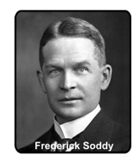 ” Because Essen was a highly skilled experimental physicist, he denounced the substitution of mathematical abstractions for hard-won unambiguous experimental results and stated: “Einstein's use of a thought experiment, together with his ignorance of experimental techniques, gave a result which fooled himself and generations of scientists. He convinced himself that the theory yielded the result he wanted, because the contraction of time accompanied by the contraction of length is needed to explain the Michelson-Morley result.” Having succinctly detailed numerous obvious blunders, Essen concluded: “Insofar as the theory is thought to explain the result of the Michelson-Morley experiment, I am inclined to agree with Soddy that it is a swindle; and I do not think Rutherford would have regarded it as a joke had he realised how it would retard the rational development of science.”
” Because Essen was a highly skilled experimental physicist, he denounced the substitution of mathematical abstractions for hard-won unambiguous experimental results and stated: “Einstein's use of a thought experiment, together with his ignorance of experimental techniques, gave a result which fooled himself and generations of scientists. He convinced himself that the theory yielded the result he wanted, because the contraction of time accompanied by the contraction of length is needed to explain the Michelson-Morley result.” Having succinctly detailed numerous obvious blunders, Essen concluded: “Insofar as the theory is thought to explain the result of the Michelson-Morley experiment, I am inclined to agree with Soddy that it is a swindle; and I do not think Rutherford would have regarded it as a joke had he realised how it would retard the rational development of science.” spin argument is manifestly bogus, recent re-examination of the experimental results by the diligent Irish physicist Doctor Alphonsus G. Kelly (1926-2005), who was awarded a Life Fellowship and a major prize by the Institution of Mechanical Engineers for having discovered that, contrary to the long-accepted theory, a siphon lifts a column of liquid against atmospheric pressure to a greater height than that calculated by theorists who mistakenly refer to the liquid’s static density when making their erroneous prediction, has confirmed that not only was Essen’s appraisal valid, but that the interpretation of the separate clock readings had been deliberately skewed to produce different results, despite the fact that two dissimilar results contravene the special theory of relativity. Doctor Kelly published his disturbing findings in 1996 in a detailed scientific paper entitled ‘Reliability of Relativistic Effect Tests on Airborne Clocks’ after having successfully exploited the Freedom of Information Act to obtain the original unedited 1972 test data from the United States Naval Observatory where the control clocks had been located. Kelly’s paper proved conclusively that the figures published by Hafele and Keating were not the actual test results, which prompted him to write in a subsequent paper entitled ‘Hafele and Keating Tests: Did They Prove Anything?’: “An analysis of the real data shows that no credence can be given for the conclusions of Hafele and Keating... Hafele and Keating avoided giving the actual test results in their paper; they gave figures that were radically altered from those results. These altered results gave the impression that they were consistent with the theory...The Hafele and Keating tests prove nothing.” Seemingly, Hafele and Keating had employed the unethical strategy that Einstein had once advocated when he memorably stated: “If the facts don’t fit the theory, change the facts”.
spin argument is manifestly bogus, recent re-examination of the experimental results by the diligent Irish physicist Doctor Alphonsus G. Kelly (1926-2005), who was awarded a Life Fellowship and a major prize by the Institution of Mechanical Engineers for having discovered that, contrary to the long-accepted theory, a siphon lifts a column of liquid against atmospheric pressure to a greater height than that calculated by theorists who mistakenly refer to the liquid’s static density when making their erroneous prediction, has confirmed that not only was Essen’s appraisal valid, but that the interpretation of the separate clock readings had been deliberately skewed to produce different results, despite the fact that two dissimilar results contravene the special theory of relativity. Doctor Kelly published his disturbing findings in 1996 in a detailed scientific paper entitled ‘Reliability of Relativistic Effect Tests on Airborne Clocks’ after having successfully exploited the Freedom of Information Act to obtain the original unedited 1972 test data from the United States Naval Observatory where the control clocks had been located. Kelly’s paper proved conclusively that the figures published by Hafele and Keating were not the actual test results, which prompted him to write in a subsequent paper entitled ‘Hafele and Keating Tests: Did They Prove Anything?’: “An analysis of the real data shows that no credence can be given for the conclusions of Hafele and Keating... Hafele and Keating avoided giving the actual test results in their paper; they gave figures that were radically altered from those results. These altered results gave the impression that they were consistent with the theory...The Hafele and Keating tests prove nothing.” Seemingly, Hafele and Keating had employed the unethical strategy that Einstein had once advocated when he memorably stated: “If the facts don’t fit the theory, change the facts”.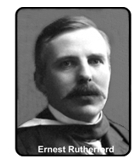 s illogical time travel paradox is that they no longer regard it as a problem to be solved, but as a logical impossibility that must be quietly accepted in order to ensure the survival of mathematical physics. Conversely, the fact that the British Nobel Laureates Ernest Rutherford (1871-1937), who discovered the structure of the atom, and Frederick Soddy (1877-1956), who unravelled the complex chemistry of radioactive substances and coined the term “isotope”, had both actively opposed the notion of relative time epitomises the attitude that is shared by most experimental physicists with regard to Einstein’s theories. Like Dingle, Heaviside, Essen, et al, they regard his mathematical contribution to science as a pointless distraction as per the opinion proffered by Rutherford in 1923 when, asked by a Canadian economist what he thought about Einstein’s relativity theory, he had tersely replied: “But it’s nonsense. We don’t need it for our work.”
s illogical time travel paradox is that they no longer regard it as a problem to be solved, but as a logical impossibility that must be quietly accepted in order to ensure the survival of mathematical physics. Conversely, the fact that the British Nobel Laureates Ernest Rutherford (1871-1937), who discovered the structure of the atom, and Frederick Soddy (1877-1956), who unravelled the complex chemistry of radioactive substances and coined the term “isotope”, had both actively opposed the notion of relative time epitomises the attitude that is shared by most experimental physicists with regard to Einstein’s theories. Like Dingle, Heaviside, Essen, et al, they regard his mathematical contribution to science as a pointless distraction as per the opinion proffered by Rutherford in 1923 when, asked by a Canadian economist what he thought about Einstein’s relativity theory, he had tersely replied: “But it’s nonsense. We don’t need it for our work.”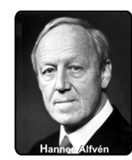 veries in electrodynamics and plasma physics and developed the theory of magnetohydrodynamics to account for the electric current and the associated magnetic effects and dynamic forces that result from the relative motion of an electrically conducting fluid with respect to a magnetic field. Initially, leading theoretical physicists who were of the opinion that interstellar space is a sterile vacuum rejected the implications of Alfvéns theory when he argued that the cosmos is suffused with plasma which carries filamentary electric currents and generates gigantic magnetic fields due to its relative motion with respect to countless localised fields that pervade the universe. In view of the fact that the scientific principles upon which he had based his argument were consistent with results obtained from practical experiments, Alfvén ignored the unqualified negative comments that countered his theory despite the alleged eminence of the quarrelsome detractors. Eventually, his vociferous critics were silenced when satellite observations confirmed the existence of a vast galactic magnetic field and an abundance of plasma, the ionised gas that is now known to constitute 99% of the cosmic baryonic matter that forms stars, nebulae, the interstellar and intergalactic medium. Because Alfvén was primarily an experimental physicist he opposed Einstein’s paradoxical version of relativity theory and drew attention to the fact that it instigated the myth that science is only comprehensible to those who belong to some initiated priesthood who employ a sacred mathematical language to fathom its mysteries. Moreover, in 1979 Alfvén wrote: “The people were told that the true nature of the physical world could not be understood except by Einstein and a few other geniuses who were able to think in four dimensions. Science was something to believe in, not something which should be understood. Soon the best-sellers among the popular science books became those that presented scientific results as insults to common sense. One of the consequences was that the limit between science and pseudoscience began to be erased. To most people it was increasingly difficult to find any difference between science and science fiction.” By means of a telling footnote Alfvén wisely cautioned: “We have to learn again that science without contact with experiments is an enterprise that is likely to go completely astray into imaginary conjecture.”
veries in electrodynamics and plasma physics and developed the theory of magnetohydrodynamics to account for the electric current and the associated magnetic effects and dynamic forces that result from the relative motion of an electrically conducting fluid with respect to a magnetic field. Initially, leading theoretical physicists who were of the opinion that interstellar space is a sterile vacuum rejected the implications of Alfvéns theory when he argued that the cosmos is suffused with plasma which carries filamentary electric currents and generates gigantic magnetic fields due to its relative motion with respect to countless localised fields that pervade the universe. In view of the fact that the scientific principles upon which he had based his argument were consistent with results obtained from practical experiments, Alfvén ignored the unqualified negative comments that countered his theory despite the alleged eminence of the quarrelsome detractors. Eventually, his vociferous critics were silenced when satellite observations confirmed the existence of a vast galactic magnetic field and an abundance of plasma, the ionised gas that is now known to constitute 99% of the cosmic baryonic matter that forms stars, nebulae, the interstellar and intergalactic medium. Because Alfvén was primarily an experimental physicist he opposed Einstein’s paradoxical version of relativity theory and drew attention to the fact that it instigated the myth that science is only comprehensible to those who belong to some initiated priesthood who employ a sacred mathematical language to fathom its mysteries. Moreover, in 1979 Alfvén wrote: “The people were told that the true nature of the physical world could not be understood except by Einstein and a few other geniuses who were able to think in four dimensions. Science was something to believe in, not something which should be understood. Soon the best-sellers among the popular science books became those that presented scientific results as insults to common sense. One of the consequences was that the limit between science and pseudoscience began to be erased. To most people it was increasingly difficult to find any difference between science and science fiction.” By means of a telling footnote Alfvén wisely cautioned: “We have to learn again that science without contact with experiments is an enterprise that is likely to go completely astray into imaginary conjecture.”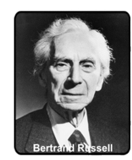 yet another Nobel Laureate, the famous mathematician Bertrand Russell (1872-1970), pointed out, the essence of special relativity theory is contained in equations that were derived by the Dutch physicist Hendrik Lorentz (1853-1928) in order to justify his contention that motion relative to some notional universal ether causes a moving body to physically contract and a moving clock to run slow. Russell had been aware of the fact that Einstein had initially deferred to Lorentz, an eminent theorist who was 26 years his senior, and had eagerly embraced the novel idea that underpinned Lorentz’s theory about the different rates at which time elapses in disparate inertial frames of reference. Thus, at a very early age, Einstein had been prepared to believe that the theoretical concept of time travel should not be summarily dismissed as a crazy idea because, according to his mentor, Lorentz, time can be likened to a property of some universal ether that can be traversed at many different speeds. In contrast with the view expressed by Russell who prudently stated: "It is undesirable to believe a proposition when there is no ground for supposing it is true,” Einstein, like many creative people, was seduced by the promise of his vivid imagination, which he then exploited to spice up his work on the relativity of time and dimension prior to boasting: “I am enough of an artist to draw freely on my imagination.” However, the significance he attached to the complex mathematical equations that he skilfully derived while attempting to justify the notion that the speed of light is invariant because the rate at which time elapses varies in accordance with variations in the observer’s speed of motion led to him unwittingly ensnaring himself in a trap of his own making. Thenceforth, his thought processes were subverted by equations that had been formulated to legitimise a personal belief despite the fact that one can use mathematics to validate arrant nonsense; nonsense such as being alive is equal and thus equivalent to the state of being dead because as half alive is equal to half dead, then it logically follows that being two halves alive is equal to being two halves dead, which, although an obvious contradiction, is admissible to theoretical physicists when expressed in algebraic terms as they routinely solve contradictory equations by adding them together and then dividing the result. For example, if the existent state is x, alive is given a notional value of 1 and dead is allocated 0, then the paradoxical contradiction can be expressed as x = 1 and x = 0. Therefore, 2x = 1 and thus x = ½, which serves to corroborate the validity of the absurd notional half alive, half dead state. Clearly, Einstein's blind worship of abstract mathematical equations was symptomatic of the human trait described by Bertrand Russell when he wrote: “Every man, wherever he goes, is encompassed by a cloud of comforting convictions, which move with him like flies on a summer day.” Similarly, Einstein's assertion that pure mathematics is a higher branch of physics was indisputably fallacious as Russell rationally argued: "Mathematics may be defined as the subject in which we never know what we are talking about, nor what we are saying is true."
yet another Nobel Laureate, the famous mathematician Bertrand Russell (1872-1970), pointed out, the essence of special relativity theory is contained in equations that were derived by the Dutch physicist Hendrik Lorentz (1853-1928) in order to justify his contention that motion relative to some notional universal ether causes a moving body to physically contract and a moving clock to run slow. Russell had been aware of the fact that Einstein had initially deferred to Lorentz, an eminent theorist who was 26 years his senior, and had eagerly embraced the novel idea that underpinned Lorentz’s theory about the different rates at which time elapses in disparate inertial frames of reference. Thus, at a very early age, Einstein had been prepared to believe that the theoretical concept of time travel should not be summarily dismissed as a crazy idea because, according to his mentor, Lorentz, time can be likened to a property of some universal ether that can be traversed at many different speeds. In contrast with the view expressed by Russell who prudently stated: "It is undesirable to believe a proposition when there is no ground for supposing it is true,” Einstein, like many creative people, was seduced by the promise of his vivid imagination, which he then exploited to spice up his work on the relativity of time and dimension prior to boasting: “I am enough of an artist to draw freely on my imagination.” However, the significance he attached to the complex mathematical equations that he skilfully derived while attempting to justify the notion that the speed of light is invariant because the rate at which time elapses varies in accordance with variations in the observer’s speed of motion led to him unwittingly ensnaring himself in a trap of his own making. Thenceforth, his thought processes were subverted by equations that had been formulated to legitimise a personal belief despite the fact that one can use mathematics to validate arrant nonsense; nonsense such as being alive is equal and thus equivalent to the state of being dead because as half alive is equal to half dead, then it logically follows that being two halves alive is equal to being two halves dead, which, although an obvious contradiction, is admissible to theoretical physicists when expressed in algebraic terms as they routinely solve contradictory equations by adding them together and then dividing the result. For example, if the existent state is x, alive is given a notional value of 1 and dead is allocated 0, then the paradoxical contradiction can be expressed as x = 1 and x = 0. Therefore, 2x = 1 and thus x = ½, which serves to corroborate the validity of the absurd notional half alive, half dead state. Clearly, Einstein's blind worship of abstract mathematical equations was symptomatic of the human trait described by Bertrand Russell when he wrote: “Every man, wherever he goes, is encompassed by a cloud of comforting convictions, which move with him like flies on a summer day.” Similarly, Einstein's assertion that pure mathematics is a higher branch of physics was indisputably fallacious as Russell rationally argued: "Mathematics may be defined as the subject in which we never know what we are talking about, nor what we are saying is true."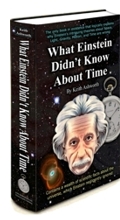 e a clock to speed up, because, in a God-like manner, he had decided that his moving clocks, like Lorentz’s, would run slow despite the fact that he had dispensed with the impedance of the ether. Was he justified in modifying Lorentz’s theory; was he justified in retaining the positive Lorentz gamma factor; is the speed of light a universal constant; or, more to the point, should an illogical time travel paradox be accepted as compelling evidence that validates Einstein’s curious theories, which promote the invented phenomenon of relative time? If you want to find the answers to these intriguing questions and obtain a rational solution to the riddle of time you can now discover the relevant facts for yourself by reserving a hardback copy of ‘What Einstein Didn’t Know About Time’ in which many more illogical anomalies that blight Einstein’s depiction of the relationship that allegedly exists between motion, the speed of light and the inconstant rate at which time elapses within some gravitationally warped four-dimensional hyperspace are examined dispassionately in exacting detail.
e a clock to speed up, because, in a God-like manner, he had decided that his moving clocks, like Lorentz’s, would run slow despite the fact that he had dispensed with the impedance of the ether. Was he justified in modifying Lorentz’s theory; was he justified in retaining the positive Lorentz gamma factor; is the speed of light a universal constant; or, more to the point, should an illogical time travel paradox be accepted as compelling evidence that validates Einstein’s curious theories, which promote the invented phenomenon of relative time? If you want to find the answers to these intriguing questions and obtain a rational solution to the riddle of time you can now discover the relevant facts for yourself by reserving a hardback copy of ‘What Einstein Didn’t Know About Time’ in which many more illogical anomalies that blight Einstein’s depiction of the relationship that allegedly exists between motion, the speed of light and the inconstant rate at which time elapses within some gravitationally warped four-dimensional hyperspace are examined dispassionately in exacting detail.